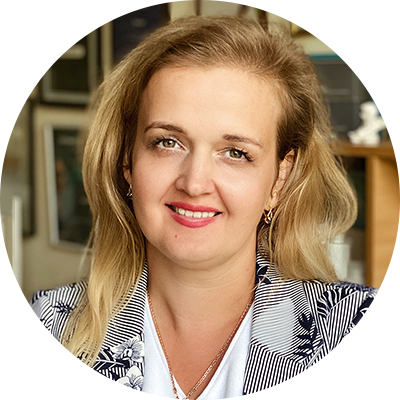Antioxidant therapy: skin care after a period of intense sun exposure
Cosmetics containing antioxidants can slow down skin aging, reduce inflammation and prevent the development of many diseases.
During periods of intense insolation, human skin is exposed to—and damaged by—type A and B sun rays. Tanning is a protective reaction to type B rays. Exposure to type A rays is manifested by photoaging—damage to the dermis, glycation of collagen, and other negative effects on the skin.

Galina Trofimova , biochemist, head of the representative office of professional cosmetics Natinuel in Ukraine
The sun is both the source of life on Earth and a constant threat to living cells. Therefore, you need to remember that UV radiation in itself is not harmful, but its excess is harmful. Since the sun causes skin damage and photoaging, we need to restore the skin after a period of intense sun exposure. And the first stage of skin restoration is antioxidant therapy. Cosmetics containing antioxidants can slow down skin aging, reduce inflammation and prevent the development of many diseases.
Antioxidants are a universal solution to the problem of free radicals in all living organisms. The principles of operation of antioxidants are the restoration of the radical to a full-fledged molecule. Cosmetics with antioxidants are used to prevent aging, protect the skin from UV radiation, toxic compounds present in air and water, to reduce inflammation and irritation, and in the treatment of many diseases.
There are several groups of antioxidants: N (nitrogen), C (carbon) and O (oxygen) antioxidants. Some of the most powerful antioxidants include vitamin C, lipoic acid, idebenone, teprenone, DMAE, pHAs.
.jpg)
A very interesting antioxidant is idebenone . Scientific research shows that its molecule is smaller than coenzyme Q10 and is more effective. Vitamin C also exhibits good antioxidant activity at high concentrations above 20%, but is an unstable substance. Lipoic acid acts as a coenzyme for many enzymatic complexes.
Restoring and moisturizing procedures also give excellent results.
Among the intensive components, lactobionic acid and gluconolactone should be highlighted.
Lactobionic acid hydrates the skin, helps exfoliate dead cells, reduces wrinkles and brightens the skin. It is especially effective for recovery after a period of intense insolation. And at the molecular level it acts as hyaluronic acid, saturating all layers of the skin with moisture due to the fact that it attracts liquid.
Gluconolactone is a substance belonging to a new generation of polyhydroxy acids. Can be used for any skin type, does not cause irritation, and exhibits antioxidant properties. As part of cosmetics, gluconolactone has a moisturizing and conditioning effect. Ideal for skin restoration during and after intense sun exposure.
An excellent restorative agent is hyaluronic acid , which has different molecular sizes. Hyaluronic acid is a well-known polysaccharide; it regulates water balance, takes care of its elasticity, and is responsible for the processes of restoration of the inner layers of the skin.
High molecular weight HA in cosmetics is not able to penetrate the skin, but creates a protective film on its surface that retains moisture inside. In order for a large molecule to penetrate into the deep layers of the skin, it is modified, crushed into smaller ones, or synthesized in the laboratory.
Medium molecular HA has conductor properties. Its main effect is to accelerate tissue regeneration: the substance penetrates the thickness of the skin and integrates into the intercellular environment, increasing the conductivity of metabolic processes. This effect does not have an immediate visual effect, however, it is medium molecular HA that helps stimulate skin metabolism and its regeneration and, as a result, improve lymph flow and eliminate toxins.
Low molecular weight HA has an intense rejuvenating effect. This action has evidence-based value in medicine.
One of the intense substances that restores skin after sunburn is provitamin B5 , an organic compound, a biochemical precursor of the vitamin. To put it simply, it is not yet a vitamin, but it can easily become one. Under the influence of oxidative processes in the body, it is converted into vitamin B5 (or pantothenic acid) . Provitamin B5 was isolated in the 30s of the last century. Its effect on the body is very diverse, it is involved in the entire metabolism, and has a noticeable rapid effect when applied externally.
Panthenol is of great importance for skin and hair: it accelerates regeneration, preserves and increases tissue elasticity, smoothes wrinkles and even slightly tightens the skin.
Damage to the skin, such as sunburn, typically makes the skin more inflamed, sensitive, and in need of repair to some degree. Therefore, among the wide range of priority ones, antioxidant, moisturizing and regenerating procedures can be distinguished. Therefore, antioxidant cosmetic therapy is what I recommend starting care with after a period of intense sun exposure.
Read more interesting and relevant articles in the magazine PRO Cosmetology by “Cosmetologist” No. 3, 2021.
Read also
- Nutraceuticals in cosmetology practice: what to pay attention to
- Cosmetology and nutraceuticals: Dietary supplements, vitamins and antioxidants
- Antioxidants: do we really need them?
- Cosmetics containing ascorbic acid: stability and effectiveness
- Skin tasks: vitamin C in cosmetology
- Note to EM specialists: water-soluble vitamins
- Antioxidants in cosmetic products as prevention of photoaging
- Vitamin therapy: what is important when prescribing
- Vitamin C in cosmetology

.jpeg)